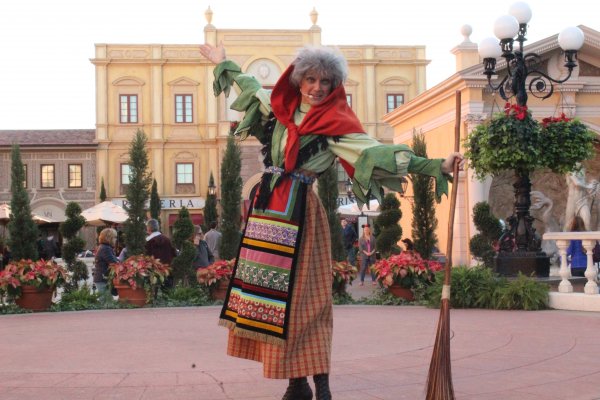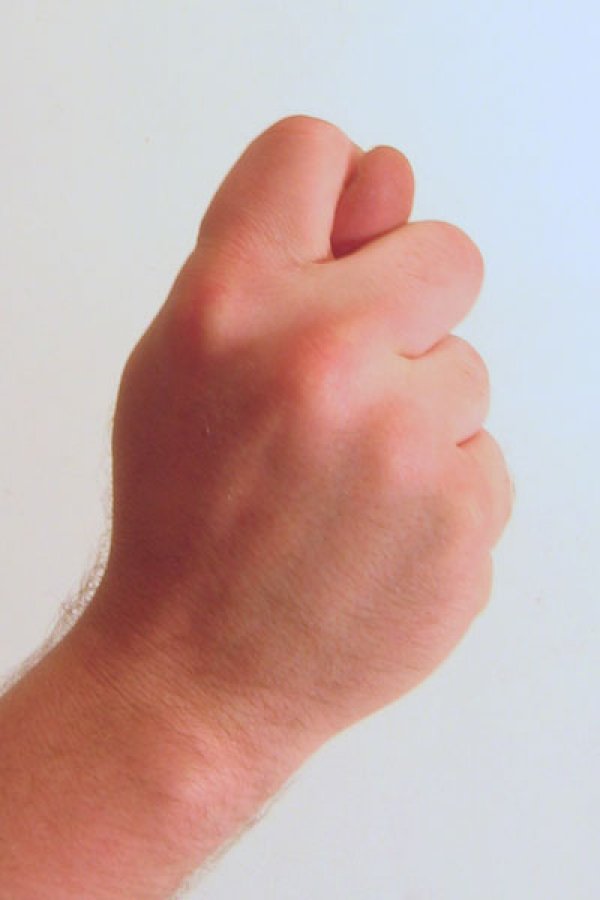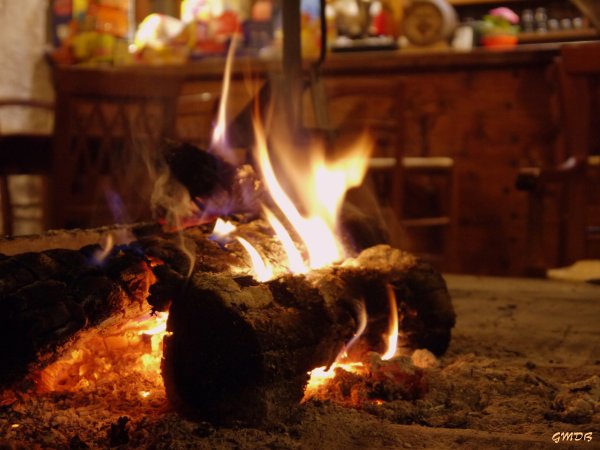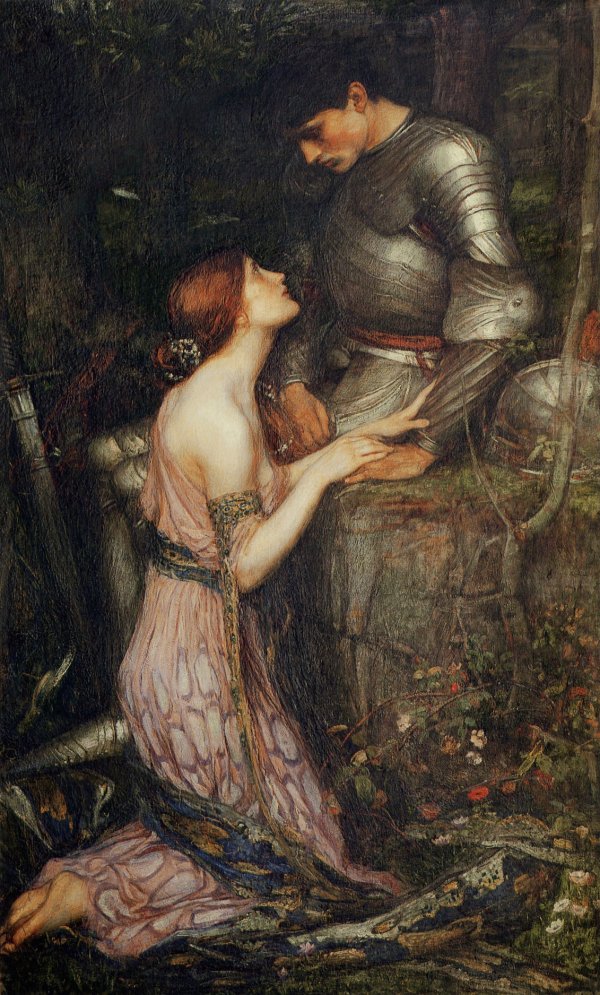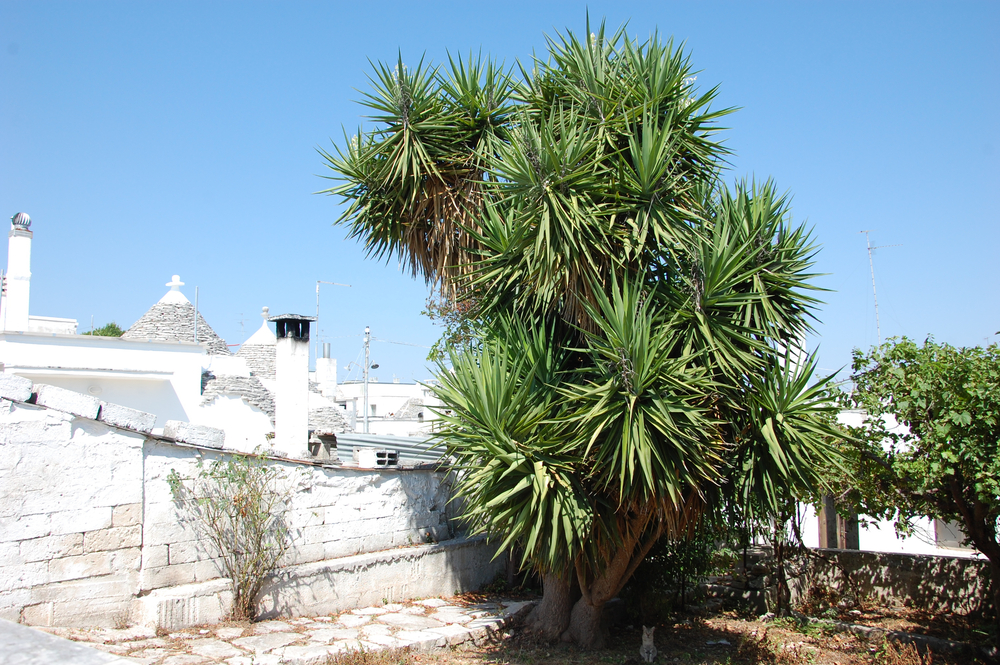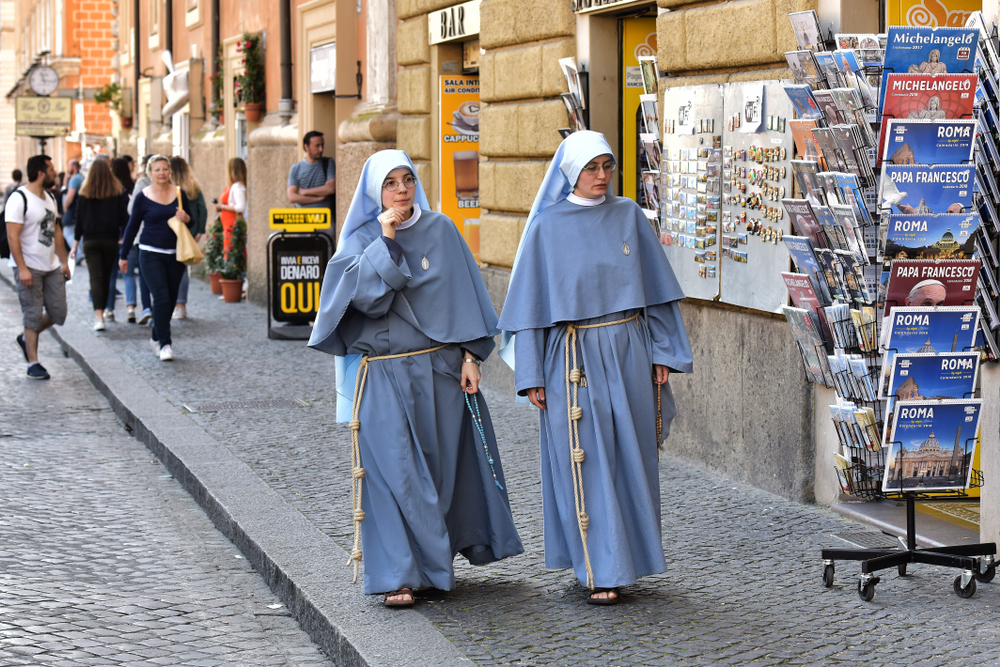Culture and Society: Superstitions and Folklore
General
Most Italian superstitions are passed down from one generation to another through oral story telling, and many are still practiced today. Some superstitions and folk beliefs are regionally specific, while others, such as the ways of getting or avoiding good or bad luck, belief in talismans, and fear of the spirits of the dead and the Evil Eye, are generally common throughout the country. The universality of these superstitions can be attributed to the fact that the many historically autonomous regions that make up the Italian peninsula were unified as a state in 1861.
Specific Superstitions
Malocchio (The Evil Eye)
The Evil Eye is one of the oldest prevailing superstitions in the Mediterranean region. In Italy, the Evil Eye is called "malocchio" and is still feared. It is believed that some people can throw a curse on other people simply by directing a gaze or a feeling of jealousy or envy toward their victim. Even a simple compliment can trigger an evil spell on the unwitting victim.
The effects of the malocchio may vary. The spell may bring a series of misfortunes, sickness or diseases, or even death. Newborns and young children are more susceptible to the spell because they are the most frequently praised and complimented and have yet to develop the inherent strength required to withstand the spell that is supposed to come with age. When a person compliments a child, the parents or guardians must make the mano cornuto (the horn sign) to protect the child from the evil spell. Nursing mothers, milking animals, and fruit-bearing trees are also more susceptible to the Evil Eye. The curse or spell can also inflict harm on one’s manliness.
There are several ways to counter or get rid of the curse or spell of the malocchio. Once a mother senses that her child is falling victim to the curse, she makes a hand gesture called mano cornuto (the horn sign) to repel the Evil Eye. An individual makes the horn sign by extending the index and small fingers straight down while the thumb holds up the middle and ring fingers curled into the palm. Another hand gesture is the mano fico or the phallic symbol in which the thumb is pressed between the middle and index fingers. Wearing a corno, a horn-twisted Italian amulet believed to ward off evil spirits, serves as another form of protection.
One can also test the effectiveness of the hand gestures or the corno by sprinkling a drop of olive oil in a bowl of hot water or holy water. This drop will form one big circle in the middle of the bowl, representing the Evil Eye, which must be broken into several small circles with prayers. Until this happens, it is believed that the curse is not yet broken and the hand sign performed as protection from the Evil Eye is not yet effective. Sometimes, older folks seek help from the local Mago or Maga (witch doctor) to perform the test. Witch doctors are more experienced in performing this type of ritual with the aid of chants and prayers known only to them. A spell cast on a person wearing a corno will backfire.
Italian Amulets
Mano Fico (The Fig Hand)
The mano fico is one of the most popular amulets in Italy for protection against the malocchio. The amulet resembles a full fist in which the thumb is inserted between the middle and index fingers. This symbol, used to connote heterosexual intercourse, is believed to hold magical powers against evil spirits. Also called "figa," the amulet’s origin can be traced back to the Roman Era when the Etruscans (ancient Italians) used them.
Mano Cornuto (The Horned Hand)
Another popular Italian amulet used against the Evil Eye is the mano cornuto. The amulet is that of a hand signal resembling the horned-head of an animal in which the thumb holds down the ring and middle fingers while the index and little fingers are extended straight out.
In ancient Greece, it was believed that horned animal heads, especially that of a bull, held magical powers due to its likeliness to the woman’s reproductive organs. Adopting this view, Italians all over the world wear these amulets.
Corno (The Horn)
Another popular amulet of ancient origin is the cornuto, corno (horn), or cornicello (little horn), which is believed to ward off bad spirits and protect the wearer from the curse or spell of the Evil Eye. The cornicello is usually carved out of red or pink coral, silver, or gold. The amulet resembles a sheep or a goat’s horn that is slightly bent.
It was believed that cornicellos were sacred to an old European moon goddess when Christianity was still unpopular in Europe and the Mediterranean. Today, some evangelical Christians refer to the horn as "Satan’s or Lucifer’s Horn" and criticize Italian Catholics for continuing to believe in the horn’s magical powers and its use.
The Neapolitans, residents of Naples in southern Italy, popularized these amulets during the 19th century and started making mano ficos, mano cornutos, and cornicellos out of other products including silver, which is sacred to the Roman moon goddess Luna, and out of carved blood corals believed to be sacred to the Roman goddess Venus. The fig hand signal, the horned hand signal, and the horn amulets also have cultural links with ancient worship to a fertility goddess during the Neolithic Era whose husband, also a deity, was often referred to as the "Horned God."
Women and children usually wear necklaces with mano fico or mano cornuto pendants to protect them from the envious gaze of the malocchio. The actual hand gestures are also used when someone senses the presence of the Evil Eye. Boys and men usually wore cornos and cornicellos to protect their genitals from the malocchio. Cornos are also hung on rear-view mirrors of cars for good luck and protection. This practice comes from an old Italian practice of using cornos to protect horses and mules from the malevolent eyes of strangers when transporting animals from place to place.
La Befana
La Befana, one of the oldest legends in Italy, is a popular character in Italian folklore comparable to St. Nicholas or Santa Claus. Characterized as an old woman with a broomstick, she visits children on the eve of Epiphany (January 6) each year filling good children’s stockings with candies and naughty children’s stockings with pieces of coal. She flies on her broomstick and enters children’s houses through chimneys while carrying a bag loaded with candies and gifts.
The name La Befana originated from the Epiphany, the Christian celebration of Jesus Christ’s birth, and the arrival of the Magi (the three Wise Men) in Bethlehem at the manger where the infant Jesus Christ was born. Story has it that when the Magi were looking for the infant Jesus, they stopped at an old woman’s house to ask for directions. The old woman, who was holding a broom in one hand and unaware of what the Magi were looking for, was not able to provide directions. Prior to leaving, the Magi asked the old woman to accompany them in their search. As she had many chores to do at that time, she begged off. Realizing later on that she had committed a big mistake, she decided to follow, but failed to catch up with the three Wise Men. Thinking she could still find the child they were seeking, the old woman stopped at every child she met to give them a small gift hoping that one of the children was Jesus Christ.
Today, the Epiphany has become a more celebrated feast for the children than Christmas. The celebration also marks the end of the Christmas celebration and the day the Magi found the manger of the infant Jesus and presented Him with the symbolic gifts of gold, frankincense, and myrrh. On this day in the morning, children find their socks filled with pieces of coal in the morning that are actually black-colored caramel candies, reminding them that they have sometimes been bad in the year that has passed.
The Italian Ceppo
The Italian "ceppo" refers to the Yule or Christmas log burnt in fireplaces during the winter festival. The burning of the ceppo has several symbolic meanings; the purification of the fire, the sun, and the purging of bad spirits and evils of the previous year.
During the ritual, blindfolded children are given long sticks to hit the burning ceppo. Sparks fly from the glowing log fly up the chimney sending away the bad spirits and evils. After removing their blindfolds, children are given gifts. The ashes from the burnt logs are kept until spring or the planting season when they are sprinkled over the fields for good luck and good harvest.
Another version of the Italian ceppo is a wooden pyramid-shaped structure very much like the Christian’s traditional "Christmas Tree." Believed to have originated in Tuscany (a region in central Italy), the tree is decorated with fancy ornaments containing several shelves. The family’s most valued "presepio" (Christmas Nativity scene) is displayed on the bottom shelf. The presepio signifies the gift of God. Other shelves contain fruits, nuts, and tiny presents. The fruits and nuts symbolize the gifts of the Earth, and the tiny presents represent the gifts of man. An angel or star on the top of the tree represents hospitality. Sometimes, a candle is lit on each shelf, thus earning the tree its name as the "Tree of Light."
Ancient Roman Superstitions
Ancient Roman societies were extremely superstitious. Their lives were full of fear, uncertainties, and strange phenomena. Thus, superstitions became a natural part of the Romans’ relationship with their gods.
Most of the Romans’ ancient beliefs were rooted in the Etruscan traditions. The Etruscans developed techniques in reading and interpreting signs and omens. They believed that an ancient mythical character named "Tages" sent them the omens.
During those times, the Etruscans examined the intestines of animals offered as sacrifices, observed lightning and thunder, and tried to find meanings of strange phenomena that had taken place. Popular among ancient Romans was the belief that any element of nature has a spirit. Roman children were often told stories of monsters who were out to eat them if they misbehaved. One such terrifying creature was the "Mormo," a Greek monster with the legs of a donkey. Another was the Roman monster "Lamia," who wandered around looking for children to devour. Romans had a great fear of "lemures," the ghosts of the dead, believed to roam in dark places and abandoned houses. Beliefs in werewolves or "verspilles," witches, vampires, and horrible beings (half-man, half-animal) were also popular among the ancient Romans. Corpses were watched intently during those days for fear that these horrible monsters may snatch the bodies. Romans wore charms and amulets as protection against these creatures and to ward off bad spirits and the Evil Eye.
The ancient Romans believed in the following good luck and bad luck omens:
- Marriages must be celebrated on certain days and months for good luck.
- When entering or exiting doors, Romans stepped with their right foot first for good luck.
- Black cats brought bad luck when they entered a house.
- It was bad luck for a snake to fall from the roof and into the house yard.
- It was also bad luck for the beam of the house to break off.
- Spilling wine, oil, or water was also bad luck in those times.
- It was bad luck to meet a mule carrying herbs called "hipposelinum" on its back.
- It was a bad omen when a cock crowed during a party or celebration.
- Stumbling over the threshold when getting out of the house was believed to be unlucky.
- Romans never mentioned fire during dinner. To counter the ill effects of this kind of talk, water was poured on the table.
- Having nightmares was considered bad luck.
Roman laws were created to avert some of the superstitions of their times. An old Roman law banned women from being in public places when holding a spindle. Furthermore, laying eyes on such a woman was bad luck or would cause a bad harvest.
Other Superstitions
Actions
- On the eve of St. John the Baptist’s Feast Day (June 23), Italians put egg whites in jars of water and set them outside the house overnight. The next morning, they observe the shape of the egg whites inside the jars to foretell a future event. If the egg whites are in the shape of a ship, it is believed that the person looking at the egg whites will travel abroad on a ship.
Animals
- Having any kind of birds inside the house is bad luck.
- Bird feathers, especially those of a peacock, are believed to possess the Evil Eye.
- If an owl is seen staring at a house, death shall befall the household.
- Hearing the howling of an owl in the evening brings misfortune.
- Being hit by bird droppings is considered good luck.
- Feeding a child the heart of a swallow will make him smarter.
- Hearing a cat sneeze is a good sign.
- Italians in the 16th century believed that when a black cat lay beside a sickly person, that person would die soon.
- Death shall fall on a household if the pet cat refuses to stay inside.
- Killing a cat brings a long period of misfortune to the killer.
- It is a sign of bad luck when a cat crosses someone’s path.
- Finding a dried snake skin brings good luck.
- Seeing a spider in the evening means good luck.
- Sticking a pin through the heart of a toad will cause pain to your enemy.
Body
- When someone’s palm itches, it signifies that the person will have money.
- The itching of the nose signifies that the person is about to be punched.
- Right eye twitches means good luck; left eye twitches mean bad things will happen.
Eating and Food
- Bread or buns placed upside down will bring bad luck, especially on board a fishing boat.
- Setting spoons, forks, and table knives crossed on the dining table brings bad luck.
- It is good luck if someone spills wine on the tablecloth.
- Before drinking, clink two glasses of alcohol to ward off the devil that may have resided on the bottle.
- Shaking the tablecloth at night will bring a long series of bad luck.
- Passing a knife to someone while holding it by the blade is considered bad luck.
- Spilling oil on the floor brings bad luck.
- Seven years of bad luck awaits a person who spilled salt on the floor or on the ground. In Sicily, it is believed that spilling salt on the ground will bring pain and suffering to the souls of children who have passed away before baptism.
- Northeastern Italians believe that eating peeled peaches will result in indigestion, while eating seven seeds of the fruit will not only cure a hangover but will also keep the person from getting another hangover in the future.
- A wish made when eating the first fruit of its season will be granted.
- Pointing one’s finger at cucumbers before harvesting them will stop the cucumbers from growing. Planting cucumbers during Black Saturday will result in good harvest. People in Verona in northern Italy believe that the cucumber’s aroma drives away cockroaches.
- Farmers in Pavia in northern Italy believe that pressing a tiny stem of rosemary against the skin shall make a person strong and lighten his mood all day.
Funerals and Death
- It is bad luck to carve a family’s name on a tombstone before someone has actually died.
- During a funeral march, a circular route is chosen on the way to the graveyard, with the family members returning home via another route to confuse the spirit of the deceased from returning. Salt is also placed under the head of the corpse for the same purpose. Favorite possessions of the deceased are sometimes placed inside the casket so that the spirit of the dead person will not return home to retrieve them.
- The colors black and purple are used at funerals. Wearing a purple dress for other occasions is considered bad luck.
Household
- In southern Italy, knives are placed on door frames to scare bad spirits from entering the house.
- A broom is placed outside the door to fend off witches from entering the house.
- Some say that it is bad for a person to sleep with his feet pointing towards the door.
- To avoid bad luck, a visitor should enter and exit through the same door.
- To facilitate the sale of a house, the owner should bury a statue of St. Joseph upside down in the front yard.
- It is bad luck to place a new pair of shoes on top of the kitchen table.
- On New Year’s Eve, a brand new coin (with the head side up) placed on the window sill brings good luck.
- It is bad luck to leave a hat on the bed.
- When moving to a new home, people sweep the floor and sprinkle salt in the corners of the house to purge the evil spirits left behind by the former occupants. Sometimes holy water is used in lieu of salt.
- Breaking a mirror means seven years of bad luck.
Lucky and Unlucky Numbers
- The number 13 brings bad luck in Italy, except for gamblers.
- The number 17 is generally unlucky because it looks like a person hanging from the gallows. In Roman it is written XVII. When rearranged to VIXI, it means "I have lived" in Roman. The phrase is commonly found on ancient tombstones.
Marriage and Wedding
- Wearing "something old" during the wedding day means a happy marriage for the couple.
- Wearing "something new" brings strength, joy, and success.
- The bride’s family gives the couple "something borrowed" during the wedding as a sign of their love. The couple must return this gift to guarantee "good luck."
- Wearing "something blue" symbolizes loyalty and faithfulness.
- Placing a penny inside the shoes of the couple brings fortune to the newlyweds.
- In ancient times, spices and herbs, such as garlic and onion, were used as wedding bouquets to purge evil spirits and bad luck during the wedding.
- Wedding cakes were broken over the bride’s head for fertility and good luck.
- An unmarried woman puts a piece of the wedding cake under her pillow with the belief that she will dream about her future husband.
- Green wedding dresses are typically not worn because it is an unlucky color.
- The white dress symbolizes purity and virginity and is believed to drive away bad spirits.
- It is bad luck for the bride to make her own wedding dress, complete the final stitches before leaving for church, or wear the complete outfit on the day before the wedding day.
- Today, brides carry horseshoes for good luck on their wedding day.
- When leaving home for the wedding, the bride should come out through the front door with her right foot first for good luck.
- On the way to the church, encountering a black cat, a rainbow, and sunshine are good omens. Seeing a pig crossing one’s path or meeting a funeral car means bad luck.
- Best men and bridesmaids wear outfits similar to the bride’s and groom’s to confuse evil spirits from harming the couple.
- Five sugar-coated almonds are given to guests as symbols of fertility, good health, fortune, happiness, and longevity.
- The wedding ring is worn on the third finger of the left hand with the belief that a vein from that finger is connected directly to the heart.
- The bride wears a green dress on the eve of her wedding day with the belief that this will bring good luck to the couple on their wedding day.
- The bride is not allowed to adorn herself with gold until she receives her wedding ring, as this is considered bad luck.
- After the wedding rites, the couple must break a glass. The number of fragments of the broken glass represents the number of joyful years the couple will enjoy in their married life.
Nature
- Elders say that rain while the sun shines symbolizes a fight between the devil and his wife. It also means that it will rain on the next day at exactly the same time.
- The "colpo d’aria" (a soft breeze of air) is believed to be very dangerous and may cause serious sickness when one is subjected to it.
- Ironically, the Yucca plant, sometimes called the "plant of happiness," brings bad luck.
Special Days and Time
- Tuesdays and Fridays are not good days to marry, begin a trip, start any big project, or schedule important events.
- In ancient times, it was believed that the most auspicious time to have one’s hair cut is during a full moon.
Women and Nuns
- Some Italian men believe that redheaded women are bad luck.
- Nuns are believed to be unlucky. When seeing nuns, Italians say "Your nun!" to the next person they meet to pass on the bad luck.
Copyright © 1993—2025 World Trade Press. All rights reserved.

 Italy
Italy 
